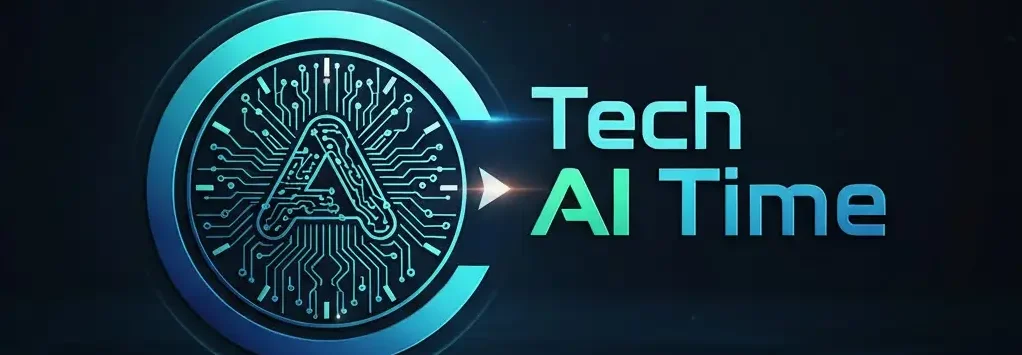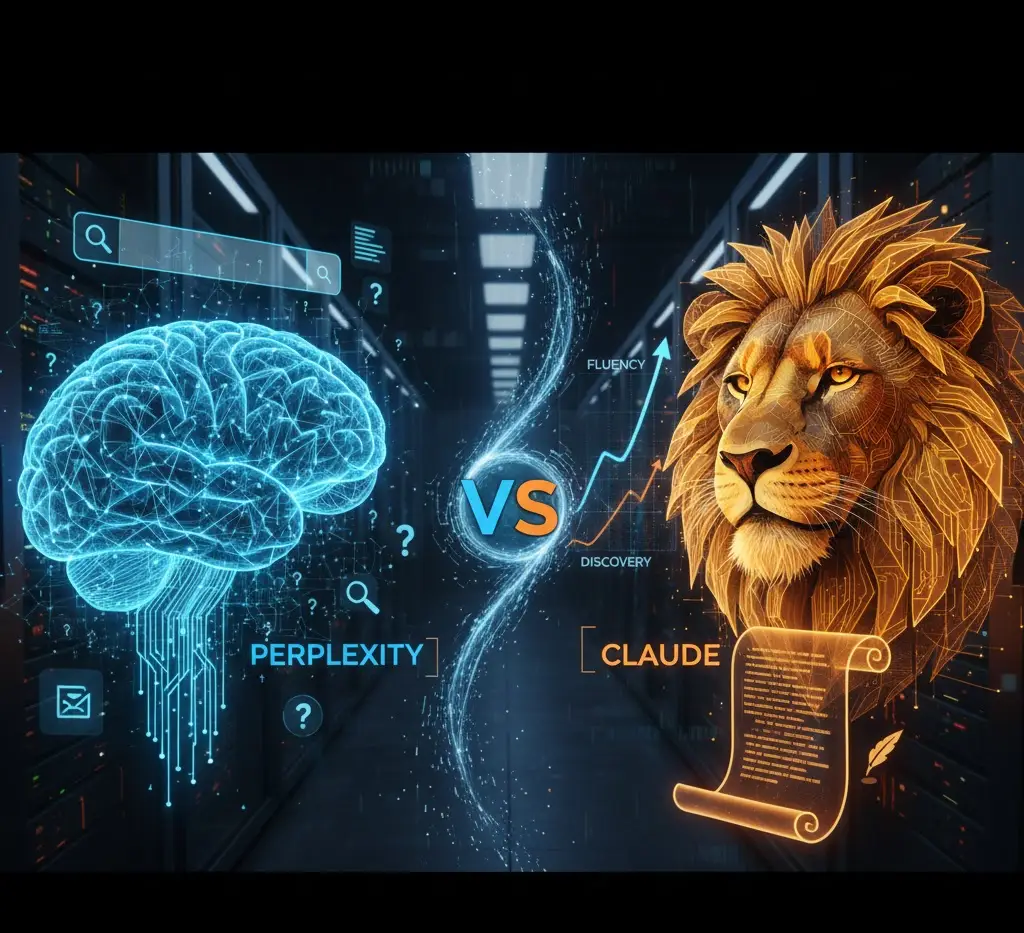Artificial intelligence has transformed a variety of sectors, and one in which it has made major advancements is in the field of natural processing of languages (NLP). It could be used for creating content, responding to questions, or creating data two of the most talked about AI models currently include Perplexity and Claude. Both are intended to improve the interaction between humans and computers, however they have their own distinct ways of working and each has its own advantages and disadvantages. This article will present the full comparison between Perplexity vs. Claude to help you better understand the capabilities of each model, their ideal applications as well as overall performance.
Introduction: What exactly is Perplexity as well as Claude AI?
Before beginning to analyze the subject of a comparison, it is important to know the difference between Perplexity as well as Claude are. Both models are created to process and produce text that resembles human language, however they’re based upon different technology foundations.
Perplexity AI
Perplexity AI is a sophisticated model of language that is focused on providing relevant and accurate responses to queries from users. It was developed by a technology company that focuses on AI-driven solutions Perplexity is a transparent, user-friendly method of information retrieval. It employs cutting-edge machine learning methods to analyze the context and give specific responses. Its main goal is to aid users in finding quick and relevant information in real-time with instantaneous responses.
A Real-world Application Perplexity is often employed in search engines and chatbots in which quick and relevant to the context are crucial. It is particularly effective in situations such as the academic world, service to customers and product suggestions, giving clear and concise information with the perfect combination of depth and clarity.
Claude AI
Claude is, in contrast is a highly advanced AI language model that was developed by Anthropic which is a business focused on making sure that artificial intelligence is operating responsibly and in a safe manner. Claude is developed with safety as its primary quality and strives to discern user intentions and give precise, accurate responses. It is trained to limit the negative effects of outputs, biases and false information, and is commonly used in areas that place ethical considerations at the forefront.
A Real-World App: Claude is typically used in healthcare, customer service applications, and in industries that demand high ethical standards, as in more complex situations which call for a more balanced and secure AI approach.
Here’s a comparison table that outlines the key differences between Perplexity AI and Claude AI:
| Feature | Perplexity AI | Claude AI |
|---|---|---|
| Developer | Developed by Perplexity AI, a tech-focused company. | Developed by Anthropic, focusing on AI safety and ethics. |
| Core Focus | Information retrieval and quick, factual answers. | Ethical AI responses, nuanced understanding, and safe interaction. |
| Model Architecture | Built on GPT-like architecture, designed for efficiency. | Designed with safety, interpretability, and human alignment in mind. |
| Speed | Fast response times for factual, straightforward queries. | Slower responses, but more thoughtful and nuanced. |
| Ethical Considerations | Less emphasis on safety; potential for biased or harmful outputs. | Strong focus on reducing harmful or biased responses, ethically safe. |
| Use Cases | Customer service chatbots, search engines, product recommendations. | Healthcare, customer service, research, finance, sensitive topics. |
| Performance in Factual Queries | High accuracy and efficiency, especially for simple queries. | Accurate but slower, with added depth and nuance in responses. |
| Performance in Complex Queries | May struggle with complex, nuanced queries. | Excels at interpreting complex or ambiguous questions. |
| Safety and Bias | Limited safety measures; can generate biased responses. | Prioritizes safety and tries to minimize harmful outputs. |
| Ideal for | Tasks that need quick, concise, factual information (e.g., FAQs, real-time data). | Tasks requiring deep understanding, ethics, and sensitivity (e.g., healthcare, research). |
| Real-World Example | Used for answering simple product or service-related questions. | Used for analyzing complex data or offering safety-conscious advice in sensitive sectors. |
| Response Style | Direct, factual, concise. | Balanced, nuanced, with careful consideration of ethics and user intent. |
| Performance in Handling Sensitive Topics | Limited; may unintentionally generate problematic responses. | Excellent; designed to avoid harm and provide safe, ethical answers. |
Comparing Performance Example of Perplexity vs. Claude
To understand better the ways Perplexity as well as Claude differ in the real world We’ll examine a few real-world examples:
Example 1. Customer Service Chatbot
Perplexity AI The company employs Perplexity to create chatbots that answer frequently asked questions from customers about shipping, refunds, or orders status. It provides precise and rapid responses, ensuring an enjoyable user experience. However, when you are asked more difficult queries (e.g., “How does your refund policy affect international shipping? “) In the end, the responses might not be as precise or contextually sensitive as you would expect.
Claude AI: However in the event that the same business would choose to employ Claude to run their chatbot and chatbot, the AI will be more cautious in the way it presents data. It could provide not just the facts, but also information about international laws and regional shipping regulations giving a more complete solution.
Example 2. Academic Research Assistant
Perplexity AI for a short investigation task, such as answering factual questions such as “What year was it when the Declaration of Independence signed?” Perplexity can perform exceptionally well, providing the right answer in a matter of seconds.
Claude AI If your research requires the interpretation of complex texts or discussing controversial historical instances, Claude might outperform Perplexity by providing a more detailed analysis and offering multiple perspectives with a keen eye on ethical considerations in sensitive areas.
The pros and cons of perplexity.
Perplexity AI Pros
- Quick response time and great to retrieve factual information.
- Ideal for environments that require the speed of depth.
- Excellently reliable for simple questions that are simple.
The Perplexity AI Con:
- Lacks nuance and depth when dealing with more complicated or ambiguous questions.
- There is less stress on safety and the risk of giving inaccurate or misleading responses.
Claude AI Pros:
- It focuses on ethical issues and responsible AI behaviour.
- Produces well-rounded, nuanced responses that are well-rounded and nuanced.
- Excellent for solving complex problems and sensitive subjects.
Claude AI Cons:
- A slower response time when compared to Perplexity.
- It may not be as efficient when situations require quick information retrieval.
How to Decide Between Perplexity and Claude
In deciding whether to go with Perplexity and Claude The choice is down to the needs of your application or project. This is a brief guide to help you choose:
Select Perplexity If:
- You require quick, accurate answers.
- The task is simpler and greater effectiveness (e.g. simple FAQs and real-time searches).
- The ethical aspect is not the main concern.
Choose Claude if:
- You require thoughtful, balanced and nuanced responses that reflect multiple viewpoints.
- The application deals with sensitive subjects where safety and ethics are crucial.
- It’s a difficult issue where comprehension is far more crucial than speed.
Conclusion What AI Model is Right for You?
As the field continues to evolve, AI language models Both Perplexity and Claude offer distinct advantages. Perplexity excels in situations where speed and accuracy of the facts are paramount, whereas Claude excels in situations that require nuanced, thoughtful ethically responsible decisions.
In the end, your decision of Perplexity and Claude is based on the specifics of your use-case–whether you are a fan of efficiency and depth, ethics or a combination between all three. Both models are effective tools on their own knowing their strengths will allow you to utilize them to the maximum extent when working on AI-driven projects.
Follow Tech Ai Time for more interesting content.
Also Read: CPU Temperature Monitor: What It Is and Why It Matters



